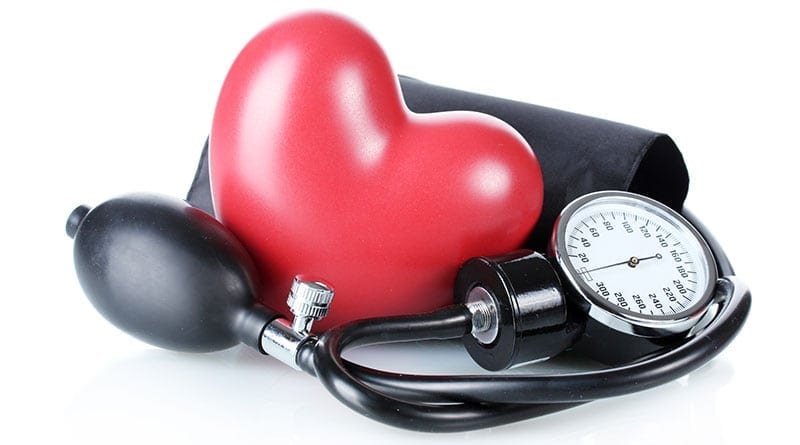Various numbers are thrown around when it comes to your health, whether it is at your physician’s office, at the gym or in the department store. Certain numbers have more meaning than others and can really give you some indication of your overall health.
It is important not to obsess about the values but learn what they mean, how they make you feel and how to change them if needed. Numbers such as weight, BMI, calories and clothing size may be less important than you think. Other numbers including your blood pressure, cholesterol, waist circumference, A1C/FBS, sleep hours, activity minutes and fiber intake are more critical. Let’s examine all of them and find out what they really mean.
1. Weight
Weighing daily can, “make you a slave to the scale.” Most physician’s think it is ideal if you, “only gain 10 pounds above your high school weight, as an adult and stay there for life.” This is unachievable for many Americans. People tend to fixate on their weight more than their body composition. Gaining too much weight does cause an increased risk of insulin resistance, pre-diabetes, diabetes, joint problems, sleep apnea, hypertension and heart disease. Although weight is considered an important number by some, there are other more important numbers to focus on. Your weight can vary daily based on fluid and food intake, exercise water loss, taking steroids, sodium and fiber eaten, sleep habits, stress levels, time of day and daily perspiration. Muscle weighs more than fat since it is dense, so scale weight can be deceiving. If you like to track your weight, try weighing only once a week. When the scale continues to go up put the brakes on and change your habits quickly. Remember, it is only one indicator.
2. BMI
BMI or body mass index, “is a measure of body fat based on your height and weight.” The BMI categories are broken down as follows: underweight = <18.5 %, normal weight = 18.5-24.9%, overweight = 25-29.9% and obese = 30% or greater. You can go to the nih.gov (National Institutes of Health) website and easily find your BMI value based on your own height and weight. Several chronic diseases are known to be more common in people with a higher BMI such as peripheral vascular disease, diabetes, hypertension, gall bladder disease and gall stones, orthopedic issues, sleep apnea and heart disease. BMI values do have some limitations. People with a muscular build may weigh more and have a higher BMI even though they have less fat. The BMI is overestimated in athletes and people who regularly lift weights. It can also under estimate body fat in older adults.
3. Waist Circumference

4. Calories
Calorie counting has been around forever, but it can get really complicated. Scientist Wilbur Atwater, put food in a “bomb calorimeter” burned it, and measured the heat and ash to figure out how much energy was released. This was the beginnings of calculating calories. “A calorie is a calorie”, according to most experts in weight management. The trick is to eat the calories that really count and are nutritious. Omit empty calories such as white bread, chips, Gummy bears, donuts. You should focus on vegetables, fruits, lean proteins and whole grains with fiber, anti-oxidants and nutrients.
Protein and carbohydrates furnish 4 calories per gram, fats furnish 9 calories per gram and alcohol has 7 calories per gram. Wise choices need to be made. A cheese burger with bacon on a soft, white bun with condiments can run as high as 900 calories with little fiber and tons of saturated fat. Most adults should be eating 1400-2300 calories a day to maintain weight and 1200-800 calories a day to lose weight depending on your present size.
Counting calories is just a small part of the entire puzzle with weight gain or loss, and it is extremely difficult to really be accurate consistently unless you eat the same foods in the same portions all the time. Most people universally underestimate portion size. There are books like Calorie King and Apps that do help you track calories, yet calories are still miscounted and miscalculated.
Instead of focusing on calorie counting, simply eat smaller portions with high quality, natural food choices. Consider, “the plate method,” with 1/2 plate of vegetables (non-starch), 1/4 protein such as lean pork tenderloin, fatty fish or skinless chicken breast and 1/4 high quality whole grain legumes beans such as wild rice, lentils, amaranth or bulgur. Do remember, a cup of broccoli is 31 calories and a cup of ice cream is between 300-400 calories, even though they both fit into the same cup.
Summer time meals can result in high calories when it comes to the typical weekend BBQ. Ribs bathed in sweet and salty BBQ sauce or a 20 ounce steak can be 1200-1500 calories. Before you add the potato salad or Cole slaw swimming in high-fat mayonnaise, switch to light sour cream, plain Greek yogurt, light mayo, mustard or vinegar, or a combination to make side salads with flavor and lower calories. Add more crunchy vegetables to the sides such as celery, carrots, peppers and onions to bulk up taste and fiber. Frozen drinks like rum runners, Pina Coladas, and Margaritas run 500-900 calories a piece. Add a rimmed glass coated in a sugar topping and up to 1000 calories you go. Stick to white wine spritzers, Prosecco, 1.5 ounce of vodka or a light beer for 45-96 calories per serving with plenty of flavor. You really do not need to count calories if you make them count, but if you do decide it is the way for you to go, do invest in a food scale, download apps such as loseit or myfitnesspal, use on-line tools, reference a calorie book or record everything in a food journal including nibbles and snacks.
5. Clothing Size
Research shows, “every manufacturer has different size patterns and a different understanding of what the size numbers and letters really mean.” Women tend to be more size conscious. Some fabrics shrink easier than others and some fabrics like Spandex have lots of give. People often buy larger sizes to allow for shrinkage or comfy fit. Do you think size 8, really is a universal size 8? NO. Trying to achieve the “perfect size” is meaningless. Higher quality goods and fabrics may be sized smaller, mass–marketing brands are sized roomier. Sizing often becomes a marketing tool to draw the customer in based on age and demographics. Some sizes are in numbers and others are in letters. The most important thing is to find the brand that fits you comfortably and be aware how you continue to fit in those pieces of clothing. If they suddenly feel tight, rethink what you are doing.
6. Blood Pressure/Cholesterol/Triglycerides
These numbers really do count for everyone. The AHA (American Heart Association) recently lowered the acceptable blood pressure numbers even more. Blood pressure, “indicates the force of blood flowing through your blood vessels.” There are two numbers to examine. The top number is the systolic which indicates, “the pressure in your arteries during the contraction” and the diastolic indicates “the pressure in your heart muscle between the beats.” The new normal range is now 120/80mm/hg or below, 121-129/81-89mm/hg is pre-hypertensive and 130/90 is considered Stage 1 hypertension. Never rely on one reading for a hypertension diagnosis. Hypertension can lead to a heart attack, stroke, cardiac arrythmias, among other ailments. There are generally no symptoms with high blood pressure and the only way to know your number is by testing it.

Cholesterol is a waxy substance in the bloodstream which eventually causes plaque build-up in the arterial walls. High cholesterol and triglycerides do not cause symptoms. With a blood test, you can find out these very important numbers, especially if you have diabetes. Your total cholesterol should be below 200 mg/dl, HDL should be above 60 mg/dl and LDL should be below 70 mg/dl if you have diabetes. Triglycerides are basically the fat collected in the blood. Triglycerides should be below 150mg/dl. These numbers can be reduced with change in diet, less saturated fats and simple sugars. If blood pressure and cholesterol do not come down with lifestyle changes, then adding medications should be addressed by your health care provider.
7. A1C/FBS
With diabetes, these numbers are critical to know to help you avoid complications including heart disease, kidney problems (nephropathy), eye disease (retinopathy), and nerve ending problems (neuropathy). These numbers indicate you how well controlled your diabetes is. The A1C, “measures your average blood glucose during the previous 2-3 months.” You should check your A1C between 2-4 times a year depending on your doctor’s advice. Even though you may be monitoring your blood sugars daily, you may be missing the highs and lows that equal the A1C. The ADA (American Diabetes Association) suggests an A1C of 7% or less and the AACE (American Association of Clinical Endocrinologists) suggest 6.5% or less. Please check with your physician, depending on your age and other medical conditions, to see where yours should be. FBS (fasting blood sugar) is a blood test which should be taken in the morning without food or drink. You should fast for 8-12 hours prior to the test. 60-99mg/dl indicates normal blood sugar, 100-125mg/dl indicates pre-diabetes and over 126mg/dl 2 consecutive times indicates diabetes. Higher than normal numbers can mean insulin resistance as well.
Sleeping Hours
Research continues to pour in telling us that, “lack of sleep can cause obesity, heart disease, diabetes, hormone imbalances, memory decline, decreased immune system and insulin resistance.” Most studies insist the magic number of sleep hours for an adult is 7-8 hours. “Sleeping less than 6 hours or more than 9 hours on a regular basis may lead to premature death” according to multiple studies. Sleep helps you regulate cortisol levels, which when elevated may raise insulin resistance, appetite levels and body fat. During sleep, your body releases cytokines made by the immune system to fight inflammation and infection. Proper sleep (all stages) helps you focus during the day and adds to your stamina and judgement. “Rapid eye movement and slow wave sleep” contribute to creative thinking, long term memory and memory processing. According to the CDC, “lack of sleep can contribute to developing heart disease, diabetes, obesity and sleep apnea.” Good sleep habits can be learned. Avoid stimulants such as caffeine, nicotine, chocolate and alcohol at least 4 hours prior to bed. Put technology away at least 2 hours before sleep. Do not exercise within 2 hours of sleep and avoid heavy meals at least 3-4 hours prior to sleep. Keep the room cool and dark and use aids such as eye masks, ear plugs or black-out shades. Take a warm bath about an hour before bed with bath salts to help you relax. Eat a small snack of protein and carbohydrate about 30 minutes prior to sleep. Talk to your physician if you do have trouble falling asleep or staying a sleep.
9. Exercise Minutes

10. Fiber Intake
You may not realize how important this number is, but fiber intake can have a big impact on your diabetes and GI health. Recently, gut health is taking center stage for the origins of many diseases. The recommended amount for fiber intake is 25-35 grams per day. The average American eats 16 grams per day. Fiber helps your digestion run smoothly, helps balance gut bacteria, keeps you satiated longer, and may aid in weight loss. Fiber comes in soluble form which slowly turns to gel and slows digestion, lowers cholesterol, heart disease and blood sugar or insoluble form which passes through your system, remains the same and helps with regularity and makes you feel full longer. When increasing fiber, always spread it out during the day. Eating too much fiber, too quickly can result in gas, bloating, stomach cramps and diarrhea. Make sure to drink plenty of water when increasing your fiber. There are OTC fiber supplements in powders, tablets and wafers but they are not as effective as fiber from food. Although most fiber foods are carbohydrates, there is no reason to avoid them even with diabetes. Making good choices and moderation is the key. Vegetables, fruits and whole grains should be part of your food plan. Include air-popped popcorn, berries, artichokes, broccoli, apples, peas, oatmeal and avocados for lots of fiber in your diet.
Some numbers have more meaning than others. Understand which ones add value to you and your health and concentrate on those!
Have a question or comment? Then post below, no registration required. I would love to hear from you!
NOTE: Consult your Doctor first to make sure my recommendations fit your special health needs.












Leave A Comment